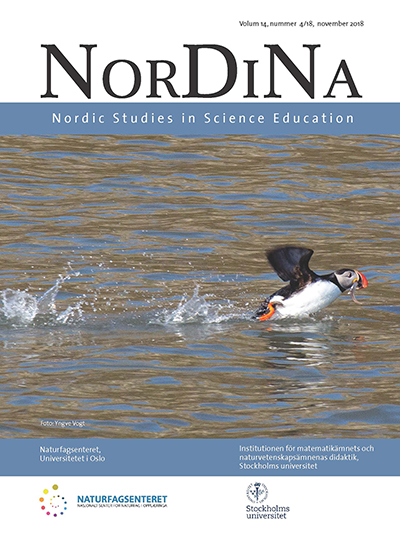Grundskollärares uppfattningar av världsarvsundervisning och världsarvet Kvarkens skärgård som lärmiljö.<br/>Compulsory school teachers` conceptions of World Heritage Education and the Kvarken Archipelago World Heritage site as a learning environment
DOI:
https://doi.org/10.5617/nordina.4077Keywords:
World Heritage Education, teachers´views, primary and secondary education, quantitative and qualitative methodsAbstract
The responsibility to preserve our natural and cultural heritage is not just a national issue but also, through international agreements, an international commitment. In World Heritage Education (WHE) students are expected to know, to cherish and to act in favour of World Heritage sites and communities. The aim of this quantitative and qualitative study is to investigate teachers’ views of WHE and the Kvarken Archipelago as a learning environment. A total of 105 teachers within Finnish primary and secondary education answered a questionnaire. The results indicate that teachers struggle to meet Unesco´s aims of WHE. The respondents primarily emphasize students´ knowledge of WH sites. A few respondents highlight the skills and experiences needed to reinforce young students´commitment to preserve WH sites, and to help close the gap between school and society. A more distinct connection to PBL and ESD is discussed as one of the pedagogical implications for the development of WHE.
Downloads
Published
Issue
Section
License
Authors who publish with this journal agree to the following terms:- Authors retain copyright and grant the journal right of first publication with the work simultaneously licensed under a Creative Commons Attribution License that allows others to share the work with an acknowledgement of the work's authorship and initial publication in this journal.
- Authors are able to enter into separate, additional contractual arrangements for the non-exclusive distribution of the journal's published version of the work (e.g., post it to an institutional repository or publish it in a book), with an acknowledgement of its initial publication in this journal.
- Authors are permitted and encouraged to post their work online (e.g., in institutional repositories or on their website) prior to and during the submission process, as it can lead to productive exchanges, as well as earlier and greater citation of published work (See The Effect of Open Access).


